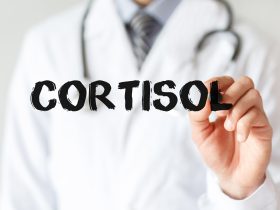Nocebo effects refer to adverse outcomes that occur as a result of negative expectations. The most notable example of nocebo effects is observed in clinical trials involving placebo treatments.
Studies have shown that a significant percentage of adults, up to 19%, and older adults, up to 26%, report experiencing adverse effects when administered placebos in clinical trials. Furthermore, approximately one-quarter of participants who receive placebos in such trials discontinue their involvement due to experiencing adverse effects.
This discontinuation can have negative implications for clinical trial enrollment and participant retention.
Initially, nocebo responses were considered an inconvenient occurrence that complicated the assessment of the true biological effects of medications.
However, recent advancements in research have shed light on the prevalence of nocebo effects not only in medical research but also in routine healthcare settings and various other contexts.
Understanding the Science Behind Nocebo Effects
Recent research has shed light on the psychological and biological mechanisms underlying nocebo effects. Studies conducted in laboratory and clinical settings have demonstrated the significant role of information and expectations in triggering nocebo responses.
For instance, studies involving asthmatic patients revealed that when they were administered a medication known to narrow certain airways in the lungs (bronchoconstrictor), but were told it was a bronchodilator (a medication that widens airways), their airways actually widened.
Conversely, when patients were given a bronchodilator but told it was a bronchoconstrictor, their airways narrowed. Similarly, in experiments involving muscle responses, participants who were informed that they received a muscle stimulant (increasing muscle tone) experienced muscle tension, even though they were actually given a muscle relaxant (decreasing muscle tone).
Furthermore, nocebo effects have been observed in Parkinson’s disease patients undergoing deep brain stimulation. In one study, patients were falsely informed that a deep brain stimulator, which delivers electrical impulses to alleviate symptoms, was turned off when it was actually on.
As a result, these patients displayed slowed reflexes and movements, mimicking the effects of the stimulator being turned off.
These findings underscore the complex interplay between psychological factors, such as expectations and beliefs, and biological responses in shaping nocebo effects across various medical conditions and treatments.
The Link Between Nocebo Effects and Pain Levels
In hospitals, effectively managing post-surgery pain is crucial for patient recovery. A significant study demonstrated the impact of nocebo effects on pain management following thoracotomy, a surgical procedure to remove lung cancer.
Pain treatments were administered via an automatic pump, with patients unaware of the infusion timing. When morphine, an opioid painkiller, was openly interrupted (patients were informed about the interruption), pain substantially increased.
Conversely, when the interruption of morphine was undisclosed (hidden), clinical pain remained consistently low, as if the opioid infusion continued.
A groundbreaking discovery in understanding nocebo mechanisms came with brain imaging techniques capable of depicting changes associated with nocebo effects. In a pioneering study, the effects of a potent narcotic like remifentanil were shown to be completely blocked by suggesting that the drug infusion had ceased.
Participants receiving continuous remifentanil infusion but told the drug was discontinued experienced increased pain (hyperalgesia). Functional MRI revealed increased brain activity in the hippocampus, associated with learning and memory, during nocebo hyperalgesia.
The order of treatment delivery also influences nocebo effects. A study assigned participants to groups receiving treatments presented as effective or ineffective. The group receiving an effective treatment experienced greater pain reduction compared to those receiving the same treatment after an ineffective one.
Similarly, starting a new medication after an unsuccessful one exacerbated nocebo pain increases, activating brain areas related to pain sensation.
Additionally, the price of a medication labeled as inducing pain is associated with nocebo effects and brain activation. Marketing a sham cream as expensive induced higher nocebo hyperalgesia than a less expensive control cream.
Nocebo effects also worsen other symptoms like itchiness and shortness of breath. Negative expectations can increase itchiness, paralleled by increased communication between brain regions involved in pain sensation.
At the molecular level, nocebo effects are linked to cholecystokinin (CCK) release, a hormone increasing anxiety and implicated in stress regulation. Blocking CCK effects with proglumide mitigates pain, indicating its critical role in nocebo effects.
Nocebo effects may peak in marginalized communities, with disparities observed between non-Hispanic white and Black participants in response to verbal suggestions. Research on nocebo effects’ mechanisms has significant clinical implications.
What to Keep in Mind
Nocebo effects are not simply psychological responses; they involve intricate neurobiological mechanisms that occur within the brain. When a patient receives information or cues from a healthcare provider suggesting negative outcomes or side effects associated with a treatment, it can trigger a cascade of physiological responses in the brain.
These responses involve the release of specific molecules and neurotransmitters, such as cholecystokinin (CCK), adrenocorticotropic hormone, and cortisol, which are associated with stress and anxiety.
These molecules can modulate various brain regions involved in processing pain and other symptoms, leading to the amplification or exacerbation of symptoms experienced by the patient.
Moreover, repeated exposure to negative suggestions or experiences can reinforce neural pathways associated with these responses, making individuals more susceptible to experiencing nocebo effects in the future.
This phenomenon highlights the complex interplay between psychological factors, neurobiology, and individual susceptibility in shaping the experience of symptoms in healthcare settings.
Understanding the underlying neurobiological mechanisms of nocebo effects can empower both healthcare providers and patients to better recognize, mitigate, and manage their impact. By fostering open and positive communication, healthcare providers can minimize the likelihood of inducing nocebo effects and optimize patient outcomes.
Additionally, patients can become more aware of their own responses and develop strategies to cope with negative expectations or suggestions, thereby exerting greater control over their healthcare experiences.















Find Us on Socials